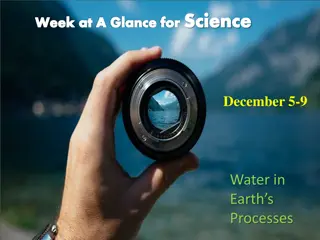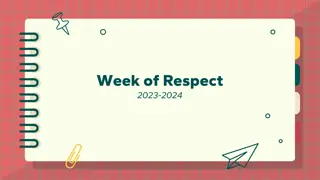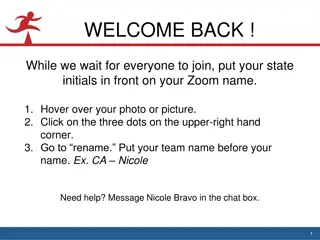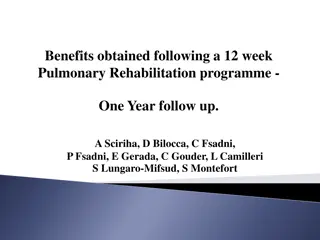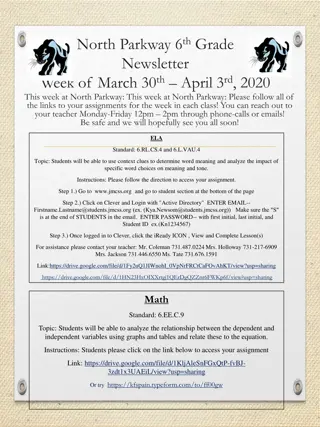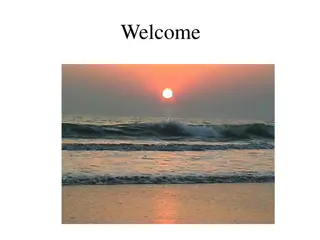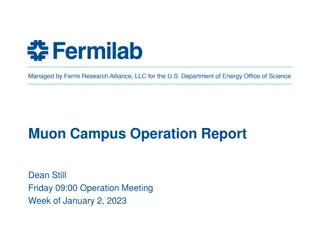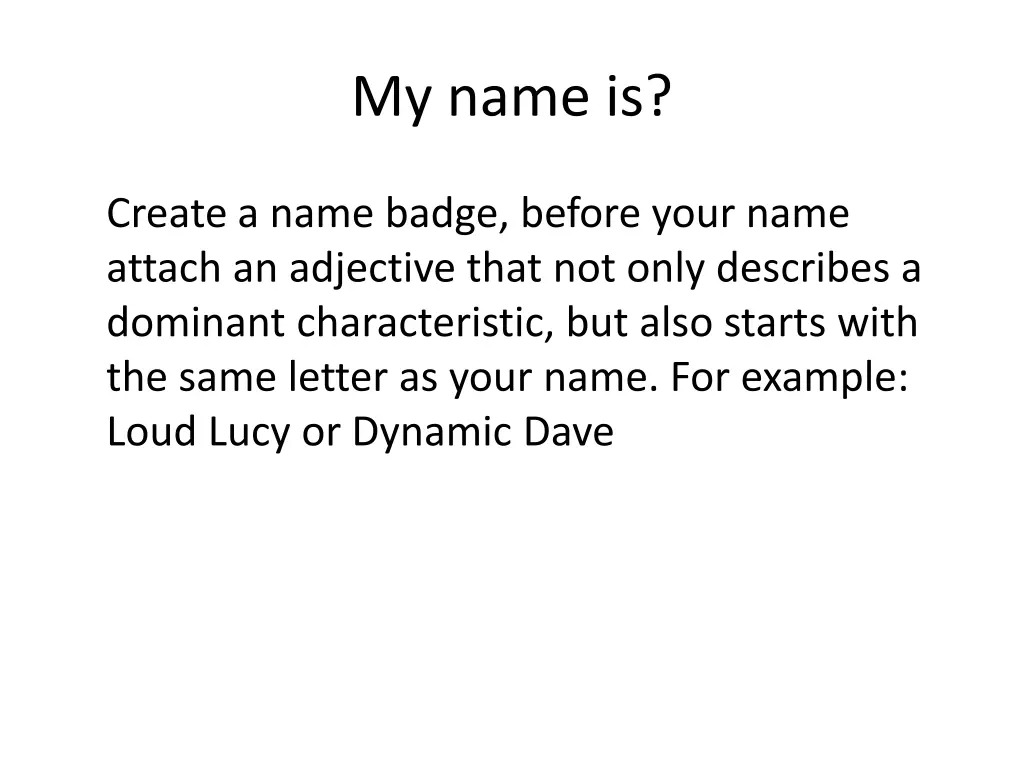
Exploring Censorship and Society: Education and Freedom Perspectives
Delve into the intricate interplay between censorship, education, and freedom as discussed by notable scholars like Paulo Freire and J.M. Coetzee. Discover the crucial role of critical thinking and self-censorship in shaping societal dialogue and individual empowerment.
Download Presentation

Please find below an Image/Link to download the presentation.
The content on the website is provided AS IS for your information and personal use only. It may not be sold, licensed, or shared on other websites without obtaining consent from the author. If you encounter any issues during the download, it is possible that the publisher has removed the file from their server.
You are allowed to download the files provided on this website for personal or commercial use, subject to the condition that they are used lawfully. All files are the property of their respective owners.
The content on the website is provided AS IS for your information and personal use only. It may not be sold, licensed, or shared on other websites without obtaining consent from the author.
E N D
Presentation Transcript
My name is? Create a name badge, before your name attach an adjective that not only describes a dominant characteristic, but also starts with the same letter as your name. For example: Loud Lucy or Dynamic Dave
Welcome to Censorship and Society Module Convenor Roxanne Bibizadeh R.E.Bibizadeh@warwick.ac.uk
Ice Breaker Conversation Challenge: You will each be given a question to find the answer to and report back to the group. You have a few minutes to find the answer.
Censorship and Society: Education as a Crucial Site of Struggle Censorship looks forward to the day when writers will censor themselves and the censor himself can retire [ ] Writing does not flourish under censorship J.M. Coetzee Giving Offence: Essays on Censorship (1996)
Paulo Freire Pedagogy of the Oppressed Education is suffering from narration sickness Problem-posing education does not and cannot serve the interests of the oppressor. No oppressive order could permit the oppressed to begin to question: Why? How can we make knowledge critical and transformative? How can we encourage students to question every aspect of society and to take responsibility for intervening in the world we inhabit?
Dates for Diaries Student Conference Assessment Week 10 Term 2 Monday 11 March 2019 or Tuesday 12 March 2019 All day
Course Structure http://www2.warwick.ac.uk/fac/cross_fac/iatl /activities/modules/ugmodules/censorship Optional Extra Workshop for Assessment Guidance / Office Hour: Tuesday 16.30-17.30 OC1.08
Personal Definitions Find an image and word or phrase that sums up how you would define CENSORSHIP and FREEDOM and stick it to the paper.
Freedom to and Freedom from There is more than one kind of freedom, said Aunt Lydia. Freedom to and freedom from. In the days of anarchy, it was freedom to. Now you are being given freedom from. Don t underrate it (Atwood 1996, 34).
Two Concepts of Liberty In 1958 Isaiah Berlin delivered a lecture at the University of Oxford entitled Two Concepts of Liberty , in which he distinguished between two basic types of freedom: negative freedom (freedom from) and positive freedom (freedom to). The concept of negative freedom is, put simply, freedom from interference, I am normally said to be free to the degree to which no man or body of men interferes with my activity (Berlin 2002, 169). Berlin argues a man s economic and social conditions can be a form of interference with freedom, if those conditions are brought about as a result of the actions of others. What is freedom to those who cannot make use of it? Without adequate conditions for the use of freedom, what is the value of freedom? (Berlin 2002, 171). Positive freedom is the freedom to be his own master (Berlin 2002, 178)
What is censorship? a variety of processes are involved, formal and informal, overt and covert, conscious and unconscious, by which restrictions are imposed on the collection, display and dissemination, and exchange of information, opinions, ideas, and imaginative expression.
John Milton 1644 books are not absolutely dead things, but do contain a potency of life in them to be as active as that soul was whose progeny they are; nay, they do preserve as in a vial the purest efficacy and extraction of that living intellect that bred them. I know they are as lively, and as vigorously productive, as those fabulous dragon s teeth: and being sown up and down, may chance to spring up armed men. And yet, on the other hand, unless wariness be used, as good almost kill a man as kill a good book: who kills a man kills a reasonable creature, God s image; but he who destroys a good book, kills reason itself, kills the image of God, as it were, in the eye.
John Stuart Mill On Liberty it is not society that requires protection against the deviant individual but the individual whose rights need to be protected, not only against the tyranny of the magistrate but against the tyranny of the prevailing opinion and feeling , that is to say, the tendency of society to impose its own ideas and practices on rules of conduct for all Can we define sanctionable harms, and thus specify under what circumstances society may be justified in restricting the freedom of the individual?
Direct and Indirect Censorship There are three major means of direct censorship and they are all preventative in nature, to stop materials deemed unacceptable from appearing or prohibiting circulation. 1. Formal pre-publication review which is now mainly utilized in authoritarian societies where formal review boards or censors are assigned to determine whether material can be published. 2. Government or interest group monopolization of publication - where the censors are the producers (e.g. where the press and media are government controlled) 3. Licensing and registration where the means of production and transmission of information may be limited to trusted groups who agree to self-censor in light of restrictions already imposed.
Indirect / Soft Censorship Difficult to catalogue as these forms of censorship can be inventive, subtle and increasingly sophisticated, but could include: Abuse of public funds and monopolies such as direct cash payments to reporters to promote personal interests. Abuse of regulatory and inspection powers so this could translate into media owners being subject to regulatory regimes, media owners are often made to understand their businesses can only prosper if their media is friendly to the government in power. Extra-legal pressure powerful officials and politicians abuse their power to buy influence or muzzle dissent.
Four Dangers for Freedom of Expression 1. Access to the Internet a. without censorship so we can discover a diversity and plurality of opinions, and b. access to infrastructure, connectivity, software, hardware, so that every single person can benefit. 2. The use of the law to censor defamation, libel, anti-terrorism efforts: there are crimes against religion that are also considered a national security threat defamation of religion in Islamic countries or blasphemy in European countries which are also considered either against the culture, the traditions or the power of the state and therefore also become a threat. 3. Technological forms of censorship, the monitoring, filtering and blocking slowly and without telling anyone they are creating their mechanisms in which they can monitor the communication, which is a breach to privacy and privacy rights, and within that monitoring, they can look at issues, they can censor, they can silence, they can filter and they can block . 4. Professionalism and Neutrality of Press Media and journalism is now a business creating a conflict of interest, oftentimes the coverage they will have will be in favor of their economic interests .
Self-Censorship: Public and Private Public self-censorship refers to a range of individual reactions to a public censorship regime. Individuals will internalise some aspects of the public censor and then censor themselves. Private self-censorship is the suppression by an agent of his or her own attitudes where a public censor is either absent or irrelevant. Private self- censorship is a process of regulation between what an individual regards as permissible to express publicly, and that which he or she wishes to express publicly.
Is all self-censorship a response to a public censorship regime? Is there only one type of self-censorship? Is it possible to formulate your own conception of what is permissible to express without the intervention of a public censor? Would reducing all cases of self-censorship to public self-censorship limit our understanding of the processes by which agents can regulate their behaviour?
Censorship Topics Covered Sex, Obscenity and Immorality Pornography History Law The Right to Freedom of Expression Education Science and Censorship Drug Laws Internet State Censorship
Group Activity Divide into four/five groups You have 10 minutes to reflect on your question and write one collective response on the blog page. We will review our responses at the end of the module.
What is censorship? Is censorship ever necessary in the public domain can it ever be justified?
Do we have freedom of expression? Can we ever obtain freedom of expression? http://www.ablogtowatch.com/wp-content/uploads/2008/03/censorship.jpg
http://annieneugebauer.com/wp-content/uploads/2012/01/censorship.jpghttp://annieneugebauer.com/wp-content/uploads/2012/01/censorship.jpg Is literature capable of damaging or corrupting us? Who defines the moral values that govern society?
What is more effective in keeping the peace: blunt state censorship of dangerous texts, or safe interpretations of supposedly respectable ones? Does literature have the power to change the world?
Assessments http://www2.warwick.ac.uk/fac/cross_fac/iatl/activitie s/modules/ugmodules/censorship/assessment/ 45% - Essay or Blog Posting or Video Project - Term 3 Week 1 24 April 2019 45% - Presentation at a conference Transcript and PowerPoint to be submitted by Monday 11 March 2019 A group abstract of no more than 400 words must be submitted in class Tuesday 19 February 2019 - Week 7 10% - Reflective commentary on the conference or creative life writing- Due 12 April 2019
Conference Organisation CONFERENCE Publicity create a poster/ front page for programme Help design a programme Conference chair for panels Organise for the conference to be filmed and an edited video created to remember the event. Can you think of anything else we need to consider? If you intend to write a commentary this will be helpful
Divide and Conquer Groups should be no larger than 4, but can be a pair. Everyone will contribute to the paper for each group - 10 minutes which equates to around 4 pages of 12 point font double line spacing which generally takes 8/10 minutes to read.
Each group needs to: Create a question/theme/title for your presentation which is based on one or multiple sessions over the course of this term. You will then need to divide up who is responsible for each part of the presentation.
Plan of action: 1. 2. 3. 4. 5. 6. Pick your group and share contact details Create a title/theme/question Decide how you will divide the presentation Start to work on your abstract and decide how you plan to finish it Decide if you want props PowerPoint, video, photos etc Set a date for distributing your work and piecing it together ie: the order of your presentation Check out the marking scale and guide each other in ensuring your presentation meets the criteria for the mark you wish to acquire. Perhaps arrange a coffee date to run through your presentation Think about any questions that the class might ask 10. Present! 7. 8. 9.
Abstract Help Read through the programme for last year and the mark scheme online.
Session Aims: To examine why Tess of the d Urbervilles and Lady Chatterley s Lover were censored or banned. To explore how both Hardy and Lawrence deal with themes of sexual immorality.
Starter: What do you know about the novels? Why do you think they were banned/censored? How do you think they were received at the time?
Publishing Hardy had great difficulty finding a publisher for the novel, and magazines demanded radical revisions before serialising it. Tillotson and Son, a Lancashire newspaper syndicate, were contracted with Hardy in 1889 to serialise the novel, but Hardy refused to make changes to the scene in which Tess is seduced/raped and in the improvised baptism of her dying baby. Hardy then took the novel to Murray s Magazine, but the editor Edward Arnold rejected the piece because the magazine preferred girls to grow up in ignorance of sexual hazards. Mowbray Morris of Macmillan s Magazine also rejected the novel because he was profoundly upset by the book s sexuality.
Degrading Women In addition to objections to the illicit relationship between Tess and Alec, Hardy was accused of taking a low view of women. His sensuous descriptions of Tess were labelled French and critics said that it was degrading to see women portrayed in this light. How would you respond to this criticism that Hardy s descriptions of Tess is degrading to women?
Revisions Before offering the novel to another magazine Hardy revised the work to produce a version that would not cause offense. In November 1890, Hardy agreed to terms with Graphic to begin serialisation in July 1891, and in Harper s New Monthly in the United States soon after. Hardy removed the seduction/rape scene and the improvised baptism. He was also forced to include a mock marriage staged by Alec to make Tess believe that she was actually his legal wife. The illegitimate baby was also omitted.
Banned The novel was first published complete in three volumes in November 1891. However, in 1891 the novel was banned by Mudie s and Smith s circulating libraries, leading to a virtual censorship over popular reading in England. The popular circulating libraries had significant influence on book sales during the second half of the nineteenth- century. Novels were expensive and authors made little money in sales unless the circulating libraries accepted their books. In the same year the novel was also the object of banning by the Watch and Ward Society in Boston, which charged that the novel contained illicit sexuality and immorality. The society forced Boston booksellers to agree that they would not advertise or sell Tess of the d Urbervilles, and most adhered to the request.
Lady Chatterleys Lover Pornographic? Lawrence began writing his last novel, Lady Chatterley s Lover in 1926. It was published two years later and banned in England and the United States as pornographic. His publisher was only prepared to consider a censored version, so Lawrence had it printed privately in Italy, in a limited edition for subscribers.
The Law and Lawrence In November 1960 a Jury comprising of nine men and three women decided that the publication of the full text of Lady Chatterley s Lover 1928 was for the public good. The trial of the publisher, Penguin Books excited a great deal of media interest. Lady Chatterley s Lover is often considered the most notorious example of literary censorship in the twentieth century.
Publication, Confiscation and Republication A period of some 30 years separates the book s first publication, confiscation and republication. In 1959 an American judge overruled restrictions on the uncensored edition. The 1960 trial at the Old Bailey in the case brought against Penguin Books Limited for publishing the first uncensored version of the novel saw Lady Chatterley s Lover subject to the first prosecution under the Obscene Publications Act of 1959.
Popularity The publishing house was acquitted, and the novel sold in millions. Film archives of the time show long queues formed around bookshops. Stories of the paperback slipped into the brown paper bag for discretion, or concealed by a decoy book to save the reader s reputation, have become part of the history and mythology of the novel.
Criticism The QC for the prosecution Griffith-Jones urged the jury to concentrate on the moralistic dimension. He noted the novel might induce lustful thoughts in the minds of those who read it , and suggested that it celebrates promiscuous and adulterous intercourse and encourages, and indeed even advocates, coarseness and vulgarity of thought and language . He was principally concerned by the thousands of copies for sale, making the book affordable to the majority and therefore available to those in possession of vulnerable minds. How do you respond to this criticism?
Graham Hough One of the experts asked to give evidence said [the book] is concerned with a very important situation; it is concerned with the relations of men and women, with their sexual relations, with the nature of marriage, and these are all matters of deep importance to all of us . Do you agree? What is the central concern of the novel?
Double Standards Is Hardy challenging Victorian morals, in particular the double standards associated with sexuality? Are the themes of the novel still relevant today? Can we relate the novel to any current debates in the media?
A Pure Woman? Why might Hardy have added the subtitle A Pure Woman ? The title offended many, who considered Tess an immoral ruined woman. Hardy defended the subtitle in an 1892 interview with Raymond Blathwayt: I still maintain that her innate purity remained intact to the very last; though I frankly own that a certain outward purity left her on her last fall. I regarded her then as being in the hands of circumstances, not morally responsible, a mere corpse drifting with the current to her end .
Deconstructing Tess Some critics have suggested that Tess has no character at all: she is only what others construct her as; and so she is only a series of seemings or impressions . Tess becomes merely a construct of male socio-sexual images of her desired form Angel idealises her, Alec sees her as a sexual object, the narrative voice fetishises her, society regards her as reckless, the novel presents her as a pure woman . What might be Hardy s intentions? Is it possible that Hardy sought to dismantle or deconstruct these images?
Nature versus Convention Hardy s most obvious intent was to rebuke a society that lived according to restrictive rules rather than by feelings of the heart. But what remains confused throughout his novel is his definition of sexual hypocrisy. Hardy wanted to liberate sex as a forbidden type of knowledge. However, some critics have argued that Hardy was unable to decide what should constitute the norms for ethical sexual conduct. Some contend the controversy over the famous rape/seduction scene points to his ambivalence, because there seems to be no distinction between the sexual acts of seduction and rape. How do you read this scene? Is Tess raped? Watch the following clip of this scene - https://www.youtube.com/watch?v=Ww6_3YQB6B0 How does it compare to your perception of the scene? Are there any clues in the scene to signify Hardy s intended meaning?
The Politics of Lawrences Reception The most overtly political debates regarding Lawrence s writing have been about censorship and the legitimacy of explicit sexuality. Whether denounced as a patriarchal bigot and pornographer or defended as a moralist and prophet of sexual liberation, Lawrence has provoked political controversies. Lawrence was more or less the only writer of working-class origin accorded canonical status in English Literature. As a representative of white, working-class male consciousness, a deeper logic of political debate involving class and gender can be discerned in Lawrence s critical reception. Why might Lawrence s position as a working class man have influenced the reception of the novel?
Group Activity There are six discussion questions. Get into groups and pick a question. In your groups decide if you would like to create a dramatic representation of the theme of censorship within either novel, or if you would like to dramatically represent your answer to the questions posed, or you can create a mind map on a board of your responses to the question.
Kate Millett berates Lady Chatterleys Lover as a chauvinistic illustration of Lawrence s alleged belief that sex is for the man . (Sexual Politics, 240) Do you agree? Is Connie portrayed as passive and Mellors active?


